  
 |
|
|
|
|
|
|
|
|
 |
| |
| |
| Year: |
1985 |
HS-G08 |

|
|
|
| |
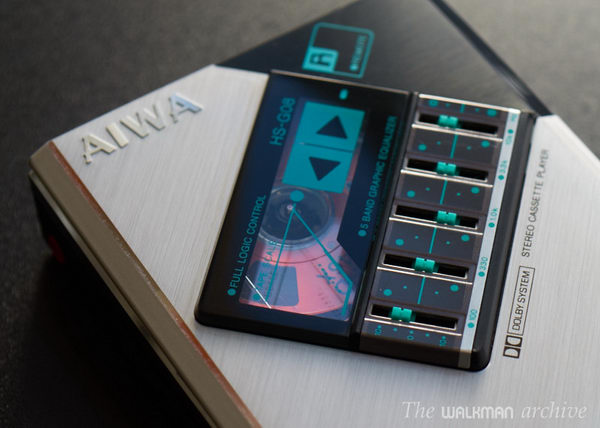 |
|
| |
|
|
| CONSTRUCTION
AND FUNCTIONS |
| Body: |
Metal |
| Color and
finish: |
Silver, Black, Red |
| Tape control: |
IC Logic |
| Radio: |
 |
| Recorder: |
 |
| Remote control: |
 |
| Auto reverse: |
 |
| Battery: |
AAAx2 |
|
| Ext.
compartment: |
 |
| Volume limiter: |
 |
| Blank skip: |
 |
| Case: |
PVC |
| Charger: |
 |
| Price: |
1985: 110$
2010: about 100$ |
| Availability: |
Extremely Rare |
| Others: |
Remote control,
Music sensor. |
|
|
| SOUND |
| Bass
boost: |
 |
| Equalizer: |
 5-band 5-band |
| Sound processor: |
 |
| Noise reduction: |
 |
| Head: |
Standard |
| Freq. response: |
40-12.500Hz (norm)
40-14.000Hz (CrO2)
40-16.000Hz (metal) |
| Max. output: |
20 mW |
|
|
| |
| |

A BRIEF DESCRIPTION
When AIWA released
the HS-G08 in 1985 it was a revolution because
of the many advanced features that they achieved
to fit in a small player. No other player from
SONY or other brands could offer such a huge
amount of features at the time; it was far more
advanced than any other player in the world,
except for it's bigger brother, the J08 (this
was the most advanced walkman on 1985).
Features like feather-touch buttons, remote control,
music sensor and a 5-band EQ put it on a superior
step over the rest, and the auto-reverse, Dolby
B, hard case, new small earphones that doesn't
have upper band and a body made almost full from
metal, complete an incredible set of features
for a player at the time. The G08 is the same as the P08 with the addition of the graphic EQ.
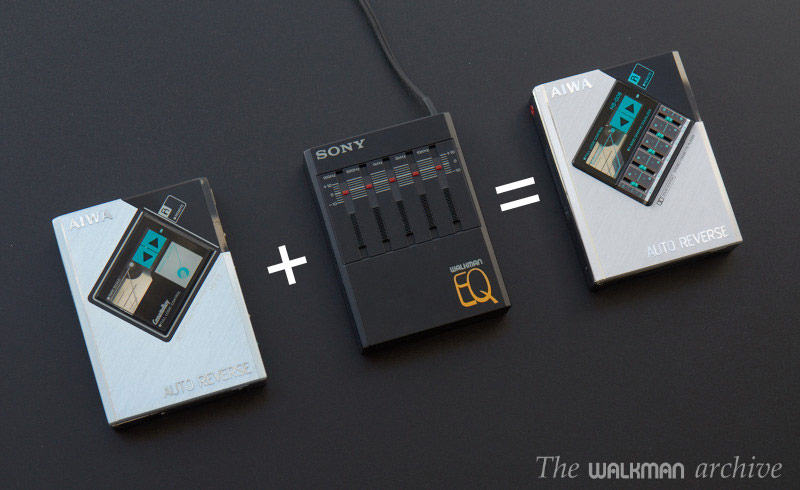
The G08, a sort of P08 plus a 5-band EQ.
AIWA released their players in the asian market under the "CassetteBoy" brand, which they are basically the same, except that they don't have the "0" before the "8". So in Asia they are called "P8" and in the rest of the world, "P08". Most of my units are from Asia, so you'll see the CassetteBoy logo in their front door.
CONTEXT
80's was a very particular
years and in 1985 many manufacturers were trying
to offer an idea of breaking the old rules, to bring fresh
ideas. And walkmans helped so much to that idea by allowing
the user to listen to music everywhere, but with
not so much quality and comodity. The G08 was AIWA's first player with a
remote control, to allow the user to take the
player inside (for example in a very cold environment)
and fully control it. The autoreverse brought
the user the ability to not to take it outside to flip the tape, and
the 5-band offered a quite good sound equalization,
so I think it was a huge step ahead that set
a new level of quality and sophistication, although the SONY WM-7 was the first to have autoreverse, feather touch and a remote, but in a pretty bigger size.
At that time SONY had the WM-101 that focuses
in size, as it was a very small player, a succesor
of the ground-breaking WM-20 released two years
before.The WM-101 and the G08 have some common features, like: auto
reverse, Dolby B and small earphones. It also
has an external compartment for an AA battery.
But it didn't have IC logic control, remote
control, music sensor, two outputs or 5-band
EQ...
SONY had also the WM-60 which features also a 5-band EQ, but in a budget walkman with older technology and lower price.
NOTE: If you have any useful
info about this model, you can collaborate with
us if you want to. Please send us an email and
share your info. We will update the page with
it.
|
|
|
| |
|

For rating the sound quality, we use a pair of
high quality Sennheiser HD 280 Pro headphones,
and a test tape (SONY UX-Pro) that has been recorded with a high-end deck (a specially modified and upgraded SONY D6C by Dr Walkman in Italy). If I tell you that this small deck performs almost at the same level as a Nakamichi Dragon, and it records even better in some cases, you probably will say I'm exaggerating, but... believe me: I'm not (and yes, I have a Dragon).
The audio tests include an objective test and a subjective test. The results of the first one are shown in the graphs and data; the results of the second one, however, are a personal opinion and they're
not intended to be a precision rating.
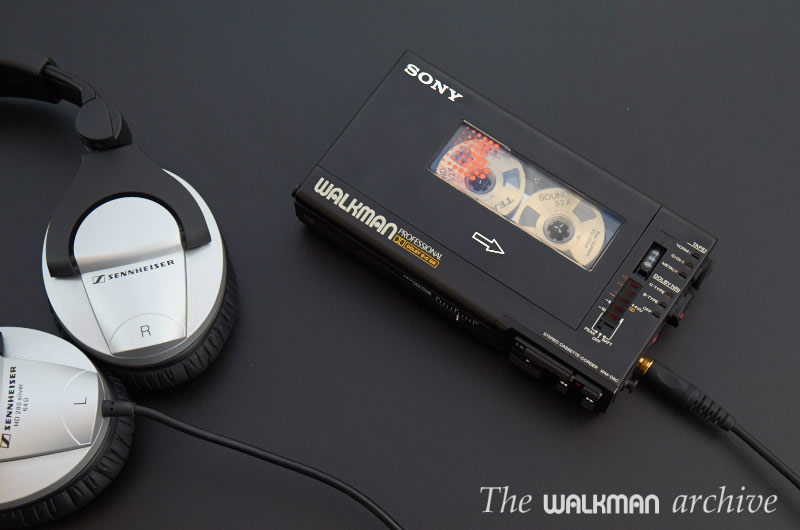
The SONY D6C, a superb recorder
Before rating this model, it was taken to a
professional technician for examine, repair and
fine adjusting. Remember these are old machines
and internal belts stops working properly after
some time. Of course, head and rollers have been
carefully cleaned before testing.
This player offers pretty good performance. The sound is clean, open and well balanced, except a lack of deep bass. It really shines when you turn on Dolby, specially if you have a recording deck that offers excellent Dolby performance. So if you want excellent Dolby B performance and the power of a 5-band EQ, this player will give you many hours of enjoying.
If you love bass, like me, I suggest you to connect it to a portable amp equipped with bass enhancing, like my CmoyBB.
| Frecuency response |
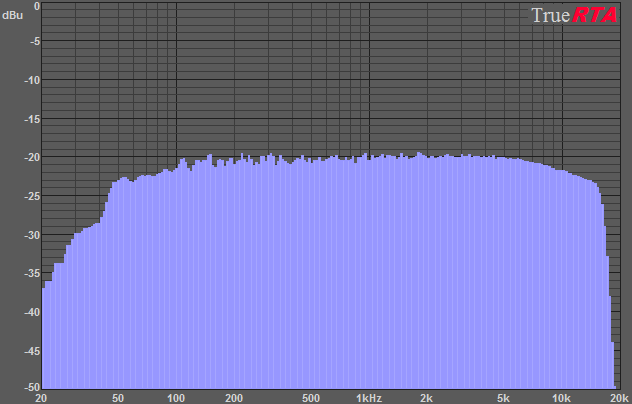
Looking at this graph we can see a pretty good curve, specially in mids and highs. Without having any sophisticated HX head, it delivers very good performance in highs, with a clean and detailed sound. The sound is also open and well balanced overall... except the lack of deep bass.
The output is powerful, perfectly capable of drive my Sennheiser HD280Pro, but adding my CMoyBB gives my the addition of bass I usually like.
The unit I'm testing has a slightly high playing speed (when testing a 3kHz recorded signal, I measured 3030Hz), but itsn't annoying at all.
Overall a good player with slight lack of bass. |
| |
| Effect of the parametric EQ |
|
The nice EQ of this G08 offers one of the best EQ available in walkmans, with 5-band and a effect of +/- 8 dB (although 10 dB announced). It's well balanced and adds few noise when pushed to the limit. However, it lacks a deep bass control (about 50-60 Hz), but this is my personal opinion. |
| |
| FRC linearizing with the parametric EQ |
|
Although powerful, the integrated EQ allows very few improvements when linearizing the FRC, specially because of the lack of deep bass control. |
| |
| Background hiss and noise reduction |
|
*: The original FRC is measured with a recording without Dolby; the one with Dolby was measured with a Dolby-encoded recording.
This is undoubtely one of the best features of this walkman: very good performance with Dolby B: with super-low noise and a pretty good FRC with almost no loss of highs. It's very surprising to say, but this cool AIWA can offer sound performance close to Dolby C ¿?!! |
| |
| |
Wow & Flutter: |
0,186% (RMS) |
|
With 0,186 of W&F this player has enough low fluctuations to be very pleasant to listen to. This effect is not clearly noticeable, except if listening to clasic music (with violins) or many sustained vocals. Not bad at all for a walkman, indeed.
|
|
| |
| |

So finally I listen to my reference recording (already explained here) and combined all data into a single graph, to let us quickly see all the measurements about it:
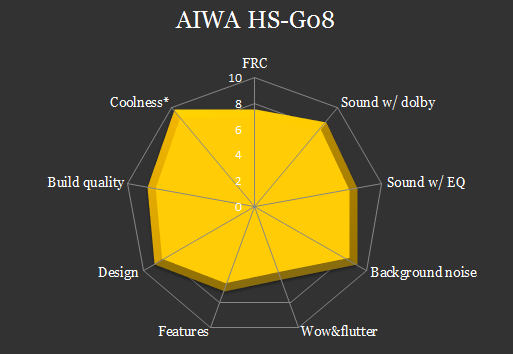
AIWA HS-G08 final rating.
NOTE: * Indicates a subjective rating.
This AIWA G08 is very well built: heavy, almost full-metal body and it has one of the coolest designs. If I have to pick up one design in the '80s era I'll probably choose it. I love the diagonal lines.
It offers a really good performance with Dolby B. The combination of strong construction, cool design and a complete list of features (including one of the first Music search function and a remote control) blowed away the competition back in 1985.
It's really one of the coolest walkmans ever made IMHO, definitely a milestone and a must-have for any serious walkman collector.
|
|
|
| |
|

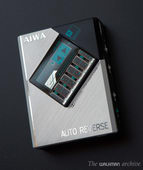
|
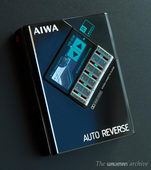
|
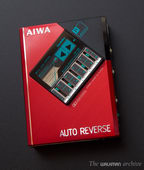
|
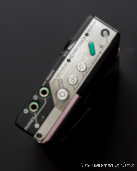
|
| The silver G08 version |
The black version. |
The red version, which has a very nice and powerful red. Extremely rare to find. |
The music sensor (which detects the next or previous song)
is activated by pressing FF or REW while playing. |
| |
|
|
|
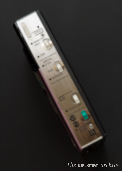
|
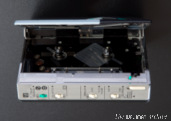 |
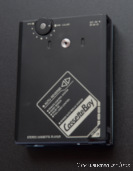
|
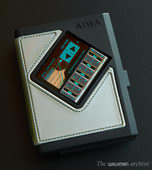
|
| The switches for tape selection, Dolby, etc... |
Opened door. |
Backside. |
The G08 in its rigid case. |
| |
|
|
|
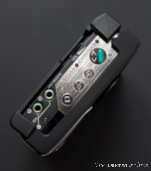
|
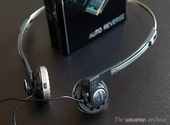
|
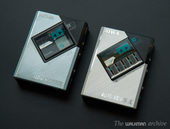
|
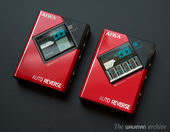
|
| |
The original headphones, without the sponges, that have been disintegrated though time. |
The silver P08 and silver G08. |
The gorgeus red P08 and G08. |
| |
|
|
|
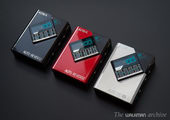
|
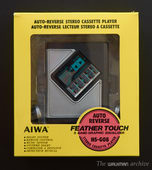
|
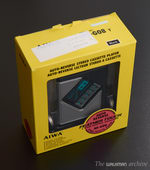
|
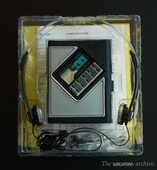
|
| What you see here is probably my favorite serie in my whole collection: the three black, silver and red G08. |
The original box. |
Upper view of the original box. |
What's inside the box. |
| |
|
|
|
| |
|
|
|
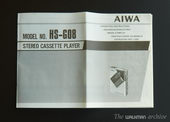
|
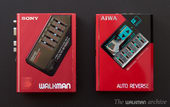
|

|
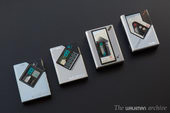
|
| The user's manual. |
The SONY WM-60 with 5-band EQ was one of the alternatives to the G08, although simpler, less featured and cheaper. |
The G08 between the two alternatives from SONY: the WM-60 and the WM-101, the most advanced player at the time. |
The complete line of AIWA's top players back in 1985. These players are some of my favorites in my collection. |
| |
|
|
|

| We haven't any info about licensed
models from other brands. If you know anyone, please
send us an email to share
the info, and we will update the page. |
|
|
| |
|

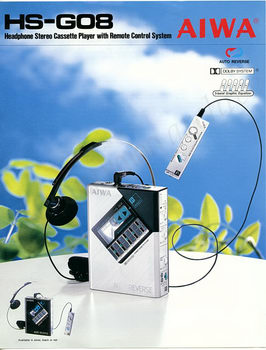
AIWA G08 catalogue (page 1). |
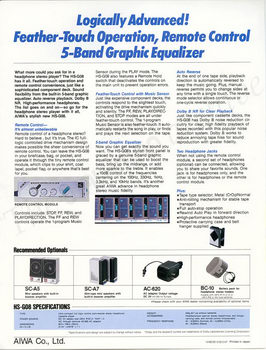
AIWA G08 catalogue (page 2). |
| |
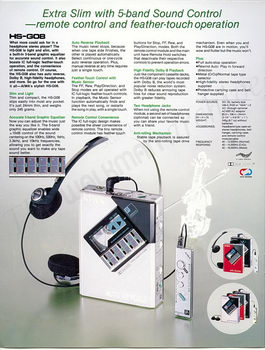
AIWA '85 Headphone Stereo catalogue (page 6) |
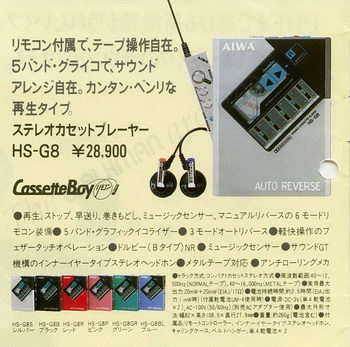
AIWA '85 japanese general catalogue (crop of page 2). |
| |
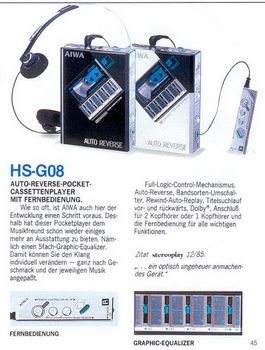
AIWA P08. Image: Shizaudio.ru |
|
| |
|
| |
Did you like this site?
This site is free and completely mantained only by me. However, it would be a nice help if you do a donation (even small). You can do it using Paypal (it's secure and fast). It will help me continue improving this site and keeping alive the memory of those loving walkmans for future generations.
|
| |

| BBE |
Barcus Berry Electronics, the name of the actual BBE
Sound, Inc. |
| DSL |
Dynamic Sound Loudness |
| DSL-EX |
Dynamic Sound Loudness EXtreme |
| HX |
Headroom Extended |
| MS |
Music Search |
| PLSS |
Private Listening Sound System |
| |
|
|
|
|
 |
|
|
|
|
|
|
|
|
 |
|
![]()
![]()
![]()